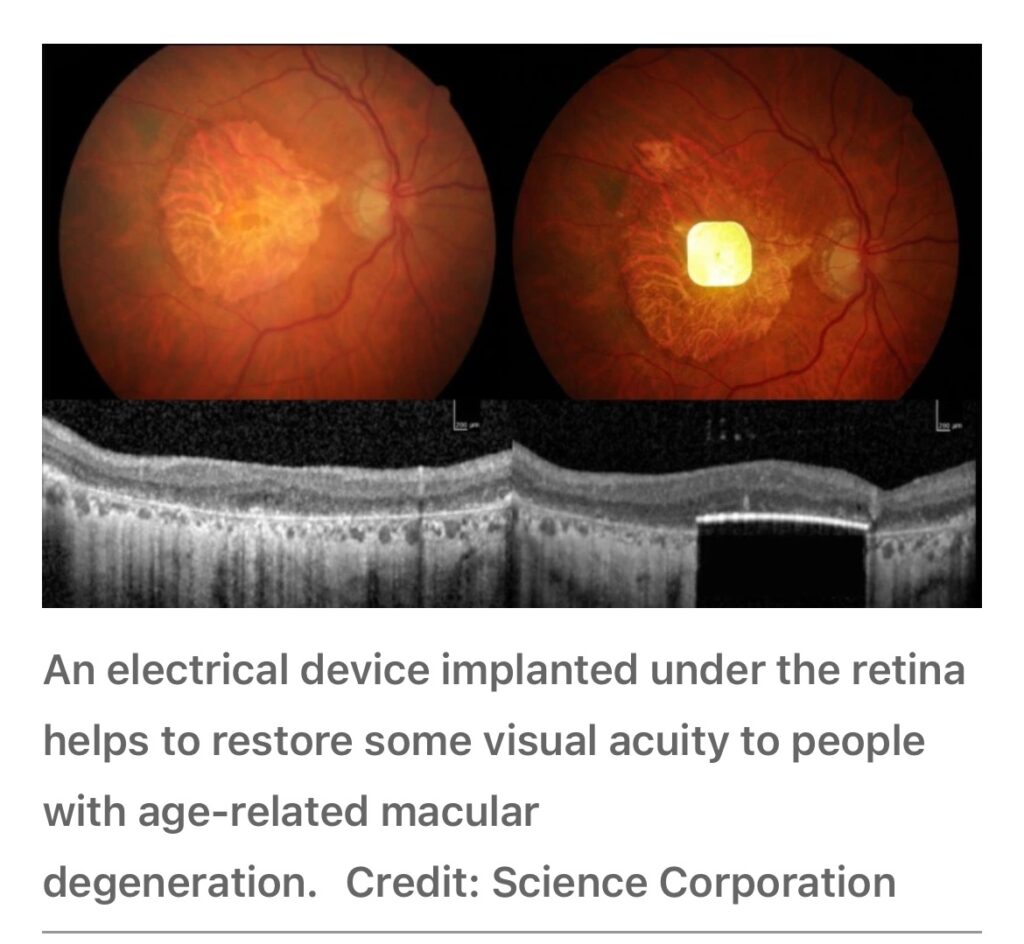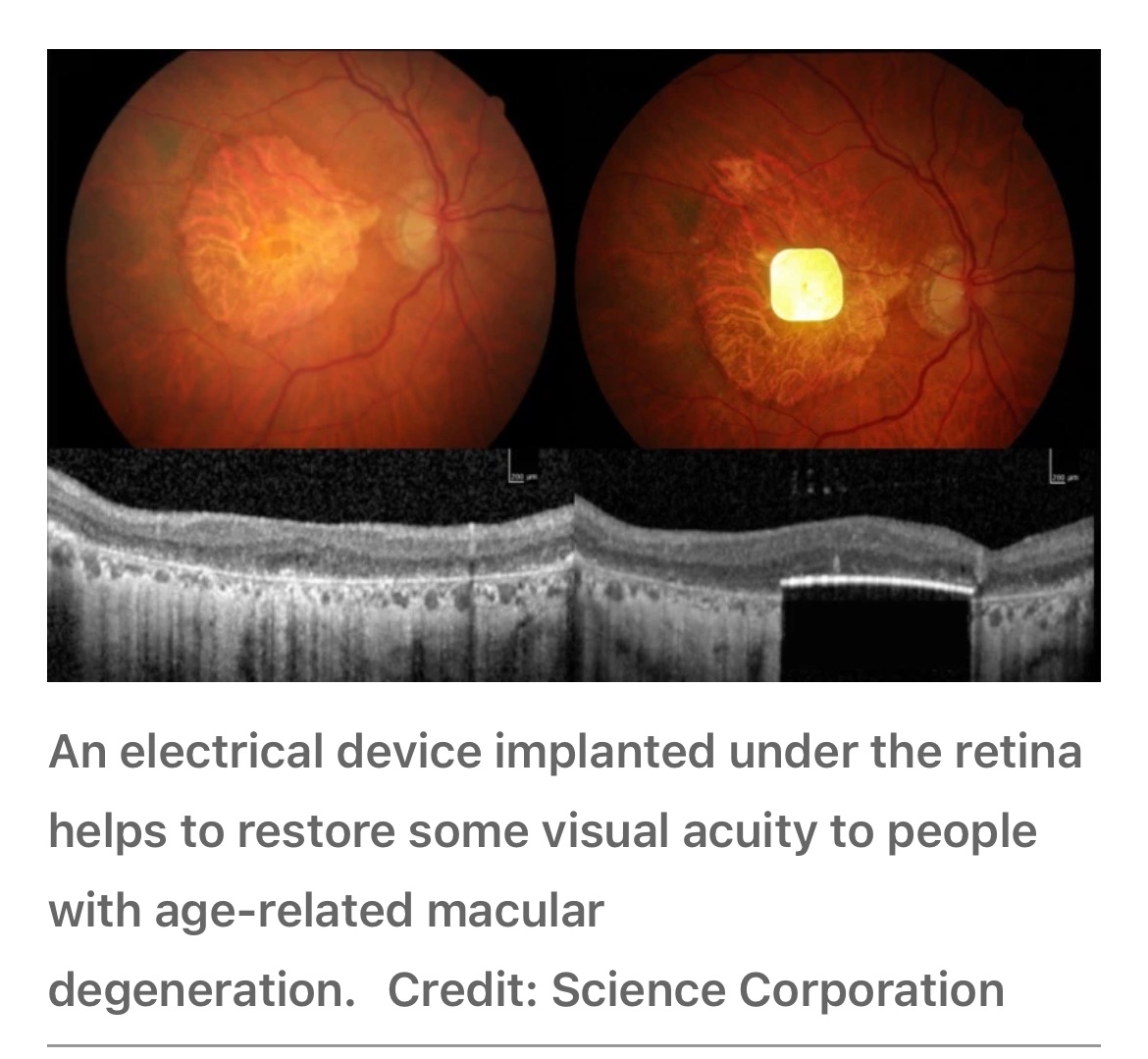Breakthrough in Vision Restoration: The PRIMA Bionic Chip Lets Blind Patients Read Again
A revolutionary retinal implant called the PRIMA bionic chip is giving hope to patients with macular degeneration. Read about how this wireless microchip helps the blind see and what experts say about its future.
For generations, blindness from retinal degeneration—especially age-related macular degeneration (AMD)—was considered irreversible. But recent clinical trials have rewritten that belief. Imagine a patient who hasn’t seen printed words for years suddenly being able to read again. That’s not science fiction anymore—it’s happening right now, thanks to a device called the PRIMA System.
The PRIMA System, developed by French biotech firm Pixium Vision, has achieved what was once thought impossible: restoring central vision to people who lost it due to advanced geographic atrophy (GA)—the late stage of dry AMD.
How the PRIMA Chip Works
At the heart of this innovation lies a 2 mm x 2 mm wireless microchip, thinner than a human hair. Surgeons implant it under the retina in a brief, minimally invasive procedure.
The system works alongside augmented reality glasses, equipped with a tiny camera and processing unit. The camera captures images, converts them into infrared signals, and projects them onto the implanted chip. The chip then stimulates the surviving retinal cells, sending visual information to the brain—effectively bypassing damaged photoreceptors.
This re-activation of the brain’s visual pathway allows patients to perceive patterns, letters, and words again—albeit in monochrome and limited detail. Still, for someone who’s lived in darkness, even a grayscale world is full of light.
(Reference: Stanford Medicine News, 2025)
What the Trials Show
In the latest European multicenter trial published in The New England Journal of Medicine (2025), 38 patients received the PRIMA implant. After a year:
84% were able to recognize letters, numbers, and words. Patients reported improved quality of life, independence, and reading ability. No major adverse events occurred, proving the implant’s safety and durability.
One participant shared:
“I used to love books. When I saw my first letter again—it was extraordinary.”
This is the first time a retinal prosthesis has demonstrated functional central vision restoration in AMD, a disease that affects nearly 200 million people globally.
What Makes It Different from Older Implants

Unlike older systems such as the Argus II retinal implant, which relied on external wires and bulky hardware, the PRIMA System is:
Completely wireless Ultra-thin and biocompatible Capable of higher resolution stimulation Designed for easy surgical insertion
The patient wears lightweight glasses and undergoes visual rehabilitation training, learning to interpret the new signals. Over time, many adapt remarkably, regaining the ability to read short words and navigate daily environments.
(Source: Nature, 2025)

Caution and Hope: What Lies Ahead
While the results are groundbreaking, the vision restored isn’t yet full color or high-definition. Patients describe seeing bright outlines or pixelated images. Still, experts emphasize that this is only the beginning.
Further trials are underway to:
Improve image resolution Expand to other retinal diseases Combine the implant with gene therapy or optogenetics for greater effect
Regulatory approval is pending, but the progress has already been hailed by the ophthalmic community as a “quantum leap” in restoring sight.
(Source: The Guardian, 2025)
Expert Opinion
Dr. Lyndon da Cruz, Consultant Ophthalmic Surgeon at Moorfields Eye Hospital, explained:
“We’re not just slowing vision loss—we’re restoring it. That changes everything about how we approach blindness.”
(Source: The Times Health Section, 2025)
Why It Matters for Optometrists and Eye Care Professionals
For optometrists, this breakthrough opens an entirely new field of neuro-visual rehabilitation. Understanding how retinal prostheses interact with the visual cortex will be essential in patient counselling, low vision care, and referral pathways.
As technology merges with biology, the future of optometry will likely include bionic vision care, AI-driven retinal monitoring, and personalized visual training.
Final Thoughts
The story of the PRIMA bionic chip isn’t just a tale of technology—it’s one of human hope. It reminds us that even when the eyes lose light, science and faith in human ingenuity can rekindle it.
For now, each letter seen by a once-blind patient marks a triumph not just of medicine, but of perseverance.
Further Reading and References
Stanford Medicine – Eye prosthesis restores sight lost to macular degeneration (2025) The Guardian – “Experts hail remarkable success of electronic implant in restoring sight” (2025) The New England Journal of Medicine – PRIMA System Clinical Trial (2025) Macular Society – “Patients with dry AMD can read again” (2025) Nature News – “Bionic chip restores reading vision in AMD patients” (2025)
Discover more from An Eye Care Blog
Subscribe to get the latest posts sent to your email.


You must be logged in to post a comment.